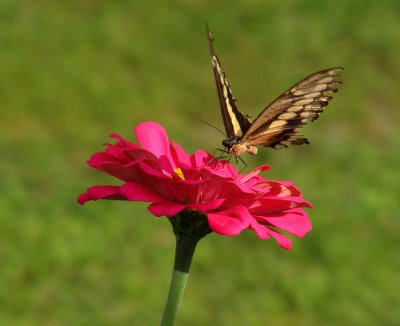This poem is an attempt at plagiarism. I come from poetry lessons with Robert Kelly and Diane Wakoski who taught that copying the poems of others was something like what the copyists at the Louvre did who learned from the masters. But in writing a poem, perhaps unlike painting, even when you try to copy another poet your own voice is bound to come out and no one might be the wiser as to what the original inspiration was. In an interesting project Robert Kelly wrote “into” Percy Bysshe Shelley’s “Mont Blanc,” adding his own text, thereby creating a new poem in book form, also called Mont Blanc. Diane Wakoski taught that if you take a poem and change the words to be your own, you are creating something completely new.
The past couple of mornings I’ve read and reread a poem by Native American poet Joy Harjo called “Eagle Poem,” which was the Writers Almanac entry for May 9. I was swept up in it, soothed, transported. Then I remembered a morning like hers when I hiked the Pacific Crest Trail in Oregon the autumn of 1976, the semester I lived up the mountain from Ashland with twenty-two students and six professors studying philosophy, literature, science and nature. One morning of the five mornings on the trail, I met a moose, an animal whose size can only be imagined, until you stand within a few feet of him.
Here’s my poem, a “plagiarism” perhaps of Harjo’s “Eagle Poem,” which I’ve included below mine. Of course plagiarism is not acceptable in prose. Is it in poetry? In this case, I am not stealing imagery or word combinations; I’m stealing the poet's pose as prompt. Maybe it is simply imitation, a form of flattery and praise for Joy Harjo.
Moose
To forage in a dark forest alone,
nudging underneath all that has dried
for a bit of life, for what keeps you going
another day. To believe you will find it
in a green leaf tipped up and up
by a breeze, or in tufts of grass
as fresh in your mouth as water.
To trek on into the black and brown
for more, always more,
trusting there will be enough green
to fill your huge being. Like the moose
at Moss Springs standing broadside
when as a college co-ed I lumbered
around the bend a mile ahead
of the trekking pack, mindlessly
lost in myself, our distance
less than his height. In his eyes
such questions, not of justice
or ethics, but of balance.
We each stood our ground
watching the other. How long?
This long. Still. As long as it takes
I know that it was on that woody hill
my clumsy shyness grew less; alone
with another I found patience to watch.
And suddenly the forest crashed
into awakeness when the bull ran off,
impossible barrel on table-legs, his crown
tipping up and up, like oak leaves.
May 2012
Eagle Poem
by Joy Harjo
To pray you open your whole self
To sky, to earth, to sun, to moon
To one whole voice that is you.
And know there is more
That you can't see, can't hear
Can't know except in moments
Steadily growing, and in languages
That aren't always sound but other
Circles of motion.
Like eagle that Sunday morning
Over Salt River. Circled in blue sky
In wind, swept our hearts clean
With sacred wings.
We see you, see ourselves and know
That we must take the utmost care
And kindness in all things.
Breathe in, knowing we are made of
All this, and breathe, knowing
We are truly blessed because we
Were born, and die soon, within a
True circle of motion,
Like eagle rounding out the morning
Inside us.
We pray that it will be done
In beauty.
In beauty.
"Eagle Poem" by Joy Harjo, from In Mad Love and War. © Wesleyan University Press, 1990.
Photo of Mount Hood Wilderness near Ramona Falls from Wikipedia Commons























+ps+web.jpg)



















+web.jpg)


+auto+web.jpg)




